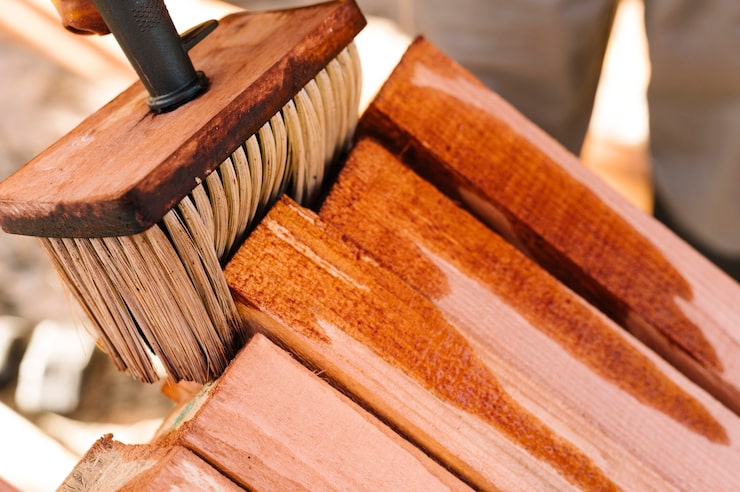Wooden surfaces in garden beds, planters, or indoor food prep areas require extra care when it comes to sealing. Standard sealants often contain harsh chemicals that can leach into the soil or contaminate food. That’s why more homeowners and DIYers are switching to a food safe paint sealer that delivers both protection and safety. Designed to be non-toxic and eco-friendly, these sealers are perfect for raised garden beds, butcher blocks, and children’s play areas. This article explores how food safe sealers work, why they’re better for health and the environment, and how to use them effectively.
Why Traditional Wood Sealers Can Be Harmful
Most commercial wood sealers are petroleum-based and loaded with volatile organic compounds (VOCs). These substances release harmful fumes, degrade over time, and can pose risks to both humans and pets. When used in garden boxes or around food surfaces, these chemicals can seep into soil or come into direct contact with edibles—posing serious health concerns.
In contrast, food safe sealers are made using natural or water-based ingredients that are safe for incidental food contact. They’re also biodegradable, low odor, and suitable for use around kids, animals, and organic gardens.
Key Benefits of a Food Safe Paint Sealer
1. Non-Toxic and Safe for Edibles
The top reason to choose a food safe sealer is its non-toxic nature. Whether you’re growing vegetables or sealing a cutting board, a safe product helps maintain the integrity of your food and garden.
2. Long-Lasting Wood Protection
Quality food safe sealers create a durable barrier that resists moisture, UV damage, and insects. This means your wooden structures—like raised beds or patio furniture—will last longer and require less maintenance over time.
3. Eco-Friendly Composition
Most food safe products are biodegradable and don’t harm beneficial microbes in the soil. They are an excellent choice for eco-conscious homeowners looking to reduce their carbon footprint without compromising performance.
4. Versatility
These sealers are great not just for garden beds but also for kitchen countertops, wooden toys, animal enclosures, and other places where chemical-free finishes are preferred.
What to Look for in a Food Safe Sealer
When shopping for a sealer, reading labels and verifying certifications is key. Look for:
- Zero or low VOCs
- Plant- or water-based formula
- Biodegradable and environmentally friendly ingredients
- FDA or USDA bio-preferred certifications for food contact
- UV and moisture resistance
Products meeting these standards are far more trustworthy and effective in the long run.
Applications in Outdoor Gardening
One of the most common uses for a food safe sealer is in raised garden beds. These beds, often made from cedar, pine, or redwood, need protection from moisture, insects, and extreme temperatures. Over time, unsealed wood deteriorates quickly, reducing its ability to support plant life.
Applying a garden box sealer creates a breathable but water-repellent surface that prevents rot while allowing the wood to age naturally. This makes your investment in a garden bed more sustainable and cost-effective.
Steps to Apply Food Safe Sealer
- Clean and Sand the Surface: Remove all dirt, mold, and debris from the wood. A light sanding helps open the grain for better absorption.
- Apply the Sealer: Use a brush, roller, or sprayer to apply the first coat. Make sure corners, edges, and ends are well covered.
- Let it Dry: Allow sufficient drying time as directed on the product label, typically 24–48 hours.
- Apply Additional Coats: Depending on exposure and wood type, a second or third coat may be necessary.
- Cure Completely: Allow the wood to cure before planting or placing food on the surface.
Safety and Sustainability Considerations
One often overlooked benefit of using a food safe sealer is the improvement in indoor air quality. Since these products contain fewer or no harmful fumes, they’re suitable for use in enclosed spaces like kitchens, bathrooms, or basements. This also makes them perfect for DIY projects involving furniture restoration, wooden toys, or crafts for children.
Because many of these products are biodegradable and break down naturally, they reduce pollution and environmental strain. That’s an important factor for gardeners and homeowners committed to sustainable living.
Maintenance and Reapplication
Like any protective finish, food safe sealers need reapplication to maintain their effectiveness. In outdoor settings, it’s best to reseal every 1–2 years depending on exposure to weather and water. Indoor applications like countertops or wooden utensils may need refreshing once a year or as signs of wear appear.
The advantage is that these products are generally easy to use and apply, even without professional help. Their ease of use encourages regular maintenance, ensuring long-term protection.
Conclusion
Choosing a food safe paint sealer is a smart and responsible decision for anyone working with wood in food-growing or food-prep areas. It offers reliable protection from moisture and decay without exposing your garden or home to harmful chemicals. Whether you’re sealing a new raised garden bed or refinishing a kitchen counter, this type of product supports both your health and the planet.
By using a certified garden box sealer, you’re taking a step toward safer gardening and sustainable practices. For those who want to go a step further, a Sustainable wood sealer provides the perfect combination of durability, eco-friendliness, and versatility. Make your wood projects last while staying true to your eco-conscious values.





